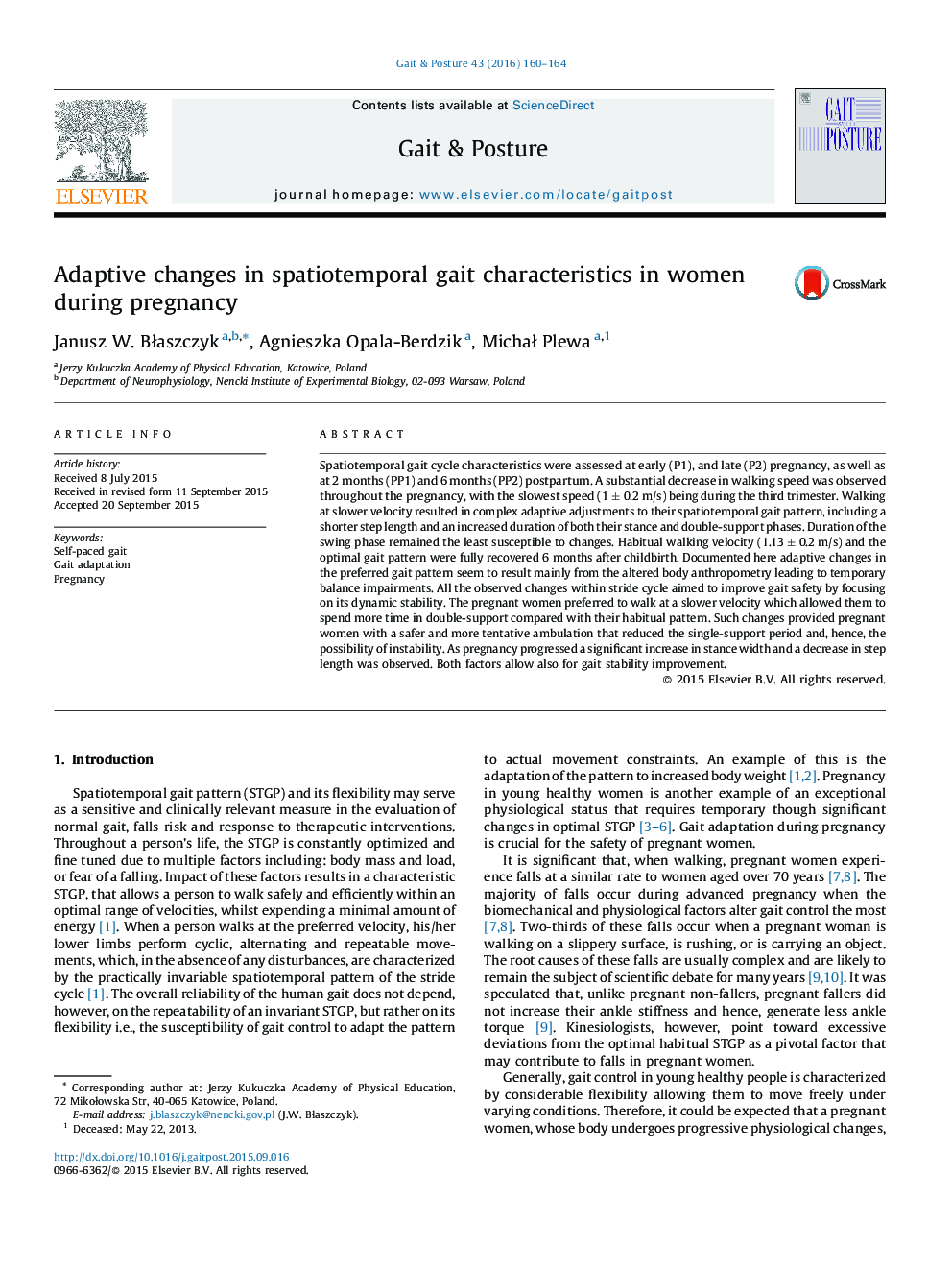| کد مقاله | کد نشریه | سال انتشار | مقاله انگلیسی | نسخه تمام متن |
|---|---|---|---|---|
| 4055844 | 1603852 | 2016 | 5 صفحه PDF | دانلود رایگان |
• Gait adaptive changes were studied in pregnant women.
• Gait kinematics were substantially modified during perinatal period.
• Changes in the gait pattern resulted from postural stability deficits.
• Individual gait pattern was fully recovered 6 months postpartum.
Spatiotemporal gait cycle characteristics were assessed at early (P1), and late (P2) pregnancy, as well as at 2 months (PP1) and 6 months (PP2) postpartum. A substantial decrease in walking speed was observed throughout the pregnancy, with the slowest speed (1 ± 0.2 m/s) being during the third trimester. Walking at slower velocity resulted in complex adaptive adjustments to their spatiotemporal gait pattern, including a shorter step length and an increased duration of both their stance and double-support phases. Duration of the swing phase remained the least susceptible to changes. Habitual walking velocity (1.13 ± 0.2 m/s) and the optimal gait pattern were fully recovered 6 months after childbirth. Documented here adaptive changes in the preferred gait pattern seem to result mainly from the altered body anthropometry leading to temporary balance impairments. All the observed changes within stride cycle aimed to improve gait safety by focusing on its dynamic stability. The pregnant women preferred to walk at a slower velocity which allowed them to spend more time in double-support compared with their habitual pattern. Such changes provided pregnant women with a safer and more tentative ambulation that reduced the single-support period and, hence, the possibility of instability. As pregnancy progressed a significant increase in stance width and a decrease in step length was observed. Both factors allow also for gait stability improvement.
Journal: Gait & Posture - Volume 43, January 2016, Pages 160–164
